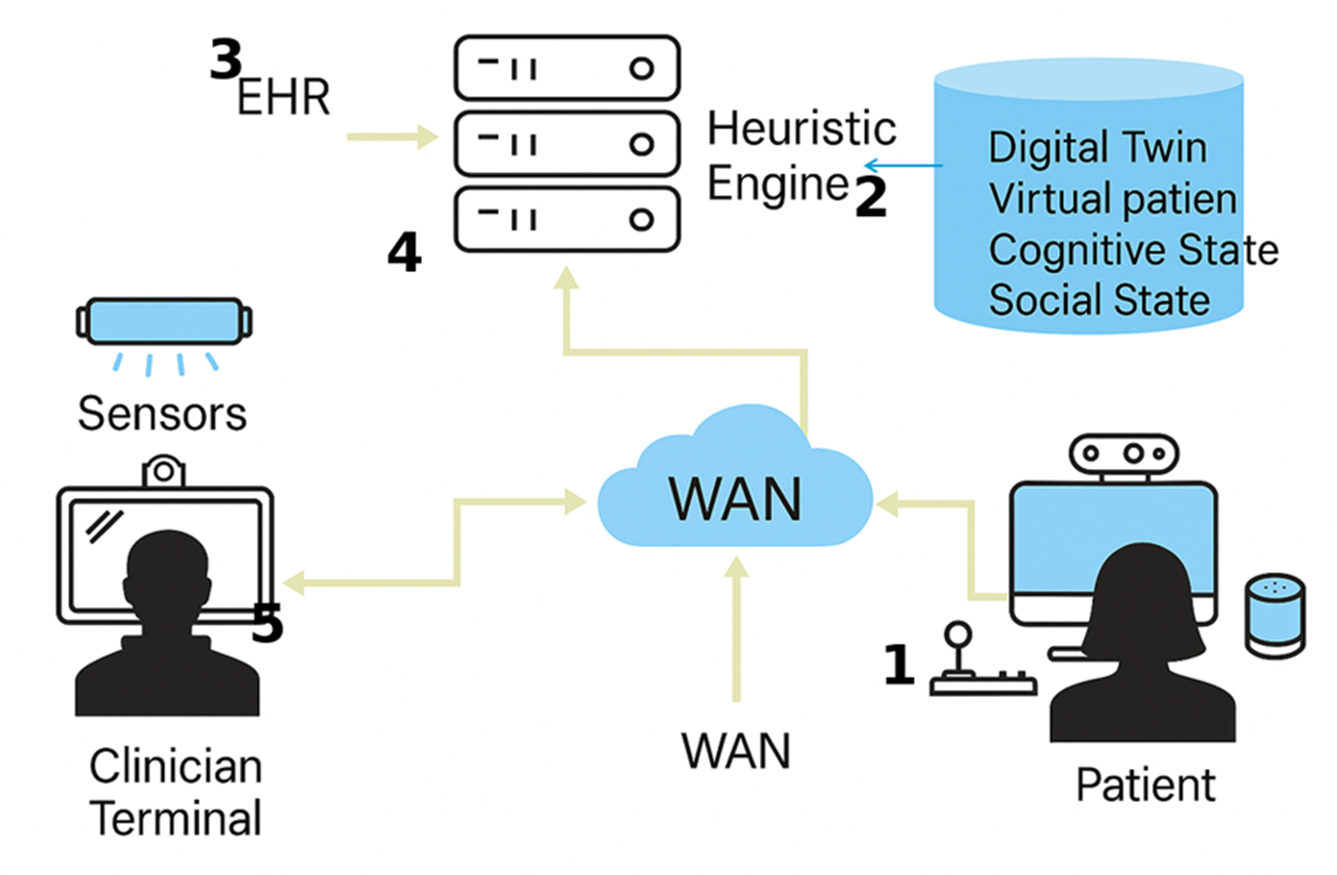Traditional telehealth platforms struggle to deliver high-quality neurological assessments, particularly for patients with cognitive impairments, neuromuscular disorders, or mobility challenges. These gaps limit clinicians’ ability to detect subtle physical and behavioral cues critical for timely accurate diagnosis.
To address this need, researchers at The George Washington University and Care Constitution Corp. have developed a cyber-physical system that transforms telehealth sessions into sensor-enhanced diagnostic encounters. The platform combines AI, computer vision, and multimodal sensors to generate a real-time, “digital twin” of the patient—capturing their physical, emotional, and cognitive state for clinical analysis.
Using thermal imaging, eye tracking, audio/video inputs, and automated camera control the system identifies clinical indicators such as facial asymmetry, speech variations, and ocular fatigue. A built-in decision support (heuristic reasoning engine) interprets this data to support diagnosis and care planning.

Illustration: This Cyber-Physical System enables remote neurological assessments through AI-driven analysis, digital twin modeling, and secure data exchange.
(1) Patient: Real time- data captured via multimodal sensors (visual, audio, thermal etc) .
(2) Digital Twin: A dynamic virtual patient model gathers physical, emotional, cognitive, social states.
(3) EHR Integration: Medical records are securely incorporated ton provide clinical context .
(4) Heuristic Engine: AI system that fuses multimodal and historical data to assist in diagnosis and care planning.
(5) Clinician: Reviews AI insights and engages with patient via telehealth interface.
Advantages
-
Real-time, AI-assisted neurological and cognitive assessments
-
Intelligent camera focus on clinically relevant body regions
-
Integrates thermal, visual, and audio data for comprehensive diagnosis
-
Designed for accessibility, including elderly and cognitively impaired users
-
Supports both remote and in-clinic diagnostic workflows
Applications
-
Remote screening and monitoring of neuromuscular disorders (e.g., myasthenia gravis)
-
Cognitive and behavioral assessments via telehealth
-
Enhanced neurological and cranial nerve exams in clinical settings
-
Digital twin-based models for ongoing patient monitoring and personalized care